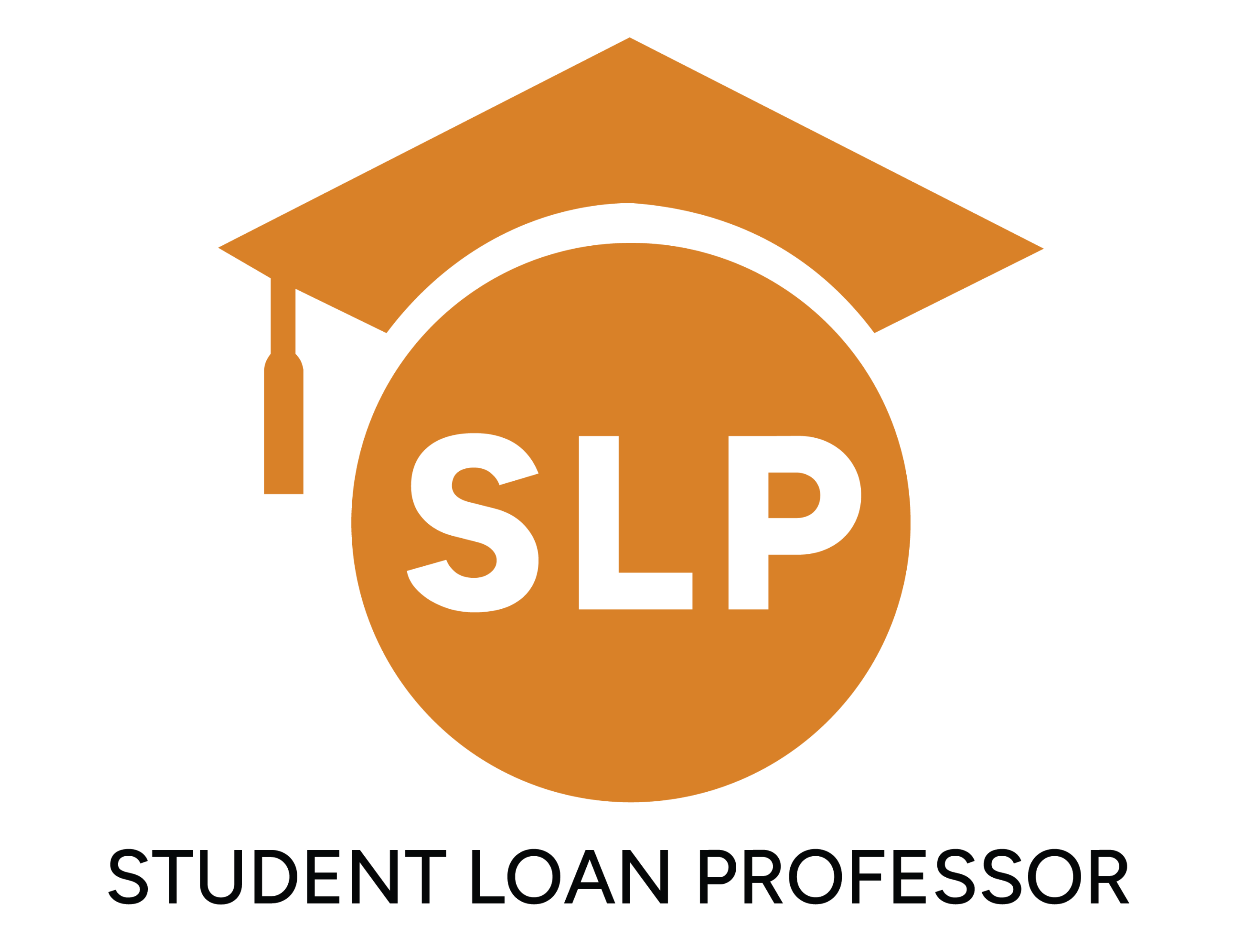Student loan debt can feel like a heavy burden, impacting your financial freedom and long-term goals. Millions of Americans are grappling with student loan repayment, but with the right strategy, you can conquer your debt and achieve financial security.
In this comprehensive guide, we’ll cut through the generic advice and offer practical, actionable steps you can take today to pay off your student loan.
Key Takeaways
- Paying off loans early reduces interest and boosts long-term financial flexibility.
- Understand loan type, interest, and servicer before starting your repayment journey.
- Refinancing and extra payments can lower total debt and interest significantly.
- Federal plans, forgiveness programs, and smart budgeting maximize repayment efficiency.
Why Paying Off Student Loans Matters
Beyond the obvious benefit of eliminating debt, strategically paying off your student loans offers several advantages:
- Reduced Interest Payments: The more efficiently you pay off your loan, the less you’ll pay in interest payments over the life of the loan. Understanding how student loan interest works can help you minimize your interest costs.
- Improved Credit Score: While making on-time student loan payments helps your credit score, eliminating your debt demonstrates financial responsibility and can further boost your creditworthiness.
- Increased Financial Freedom: Without the burden of student loan payments, you’ll have more money available for other financial goals, such as saving for a down payment on a house, investing, or starting a business.
Understanding Your Student Loans
Before diving into repayment strategies, it’s crucial to understand the specifics of your student loans:
- Loan Type: Whether you have federal or private student loans makes a huge difference:
- Federal Loans: These include direct loans and federal family education loans, which offer more flexible repayment options, including an income-driven repayment plan, potential student loan forgiveness programs, and borrower protections.
- Private Loans: These typically have fewer options but may offer a lower interest rate through refinancing.
- Interest Rate: Higher interest rates mean you’ll pay more over time, making it a priority to pay those loans down faster. Having a high credit score can help you secure better interest rates and lower your overall interest.
- Loan Servicer: Your loan servicer is the company you make payments to, and it can provide information about your loan balance, interest rate, and repayment plans.
- Loan Balance: One of the first steps in creating a repayment plan is to determine your total outstanding loan balance.
- Repayment Terms: Your repayment terms can include how long your repayment period is, what your minimum monthly payments are, and your due date.
- Grace Period: This is the period after you leave school or drop below half-time enrollment before you have to start making payments.
You can find this information on your loan statements or by logging into your account on your loan servicer’s website. For federal loans, you can also access this information on the Federal Student Aid website.
Understanding How Interest Works with Student Loans
Student loan interest begins to accrue after the loans are issued, and borrowers can expect to pay more than they originally borrowed. However, student loans also have some unique traits, and understanding these can help you make more informed financial decisions.
Interest accrues daily, in most cases starting the day your loans are disbursed.
If you have a subsidized federal loan, the federal government will pay your interest while your loans are in deferment, such as when you’re enrolled at least half-time in school or during your post-graduation grace period.
The government will also pay your interest when your loans are placed in deferment due to a return to at least half-time enrollment in college, economic hardship, unemployment, cancer treatment, or military deployment.
Whether you have a subsidized loan or an unsubsidized federal loan, you will be responsible for the interest that accrues during a forbearance.
Depending on the type of loan, unpaid interest may be subject to interest capitalization after a period of deferment or forbearance, meaning that it will be added to your loan principal. In other words, you will pay interest on accrued interest and increase the loan balance over time.
For Direct Loans and other federally-owned loans, interest is capitalized after a deferment on an unsubsidized loan or if you are repaying your loans under the income-based repayment (IBR) plan and no longer qualify to make payments based on income or leave the IBR plan.
Interest that accrues during a forbearance while you are in school or in the post-school grace period is no longer capitalized into the principal loan balance of your Federal Direct Loans.
Strategic Approaches to Paying Off Student Loans
Refinance Your Student Loans
Refinancing involves taking out a new loan to pay off your existing student loans, ideally at a lower interest rate. This can significantly reduce your monthly payments and the total amount of interest you pay over the life of the loan.
Many private lenders offer this service, but it’s crucial to understand the implications for federal benefits.
Refinancing is a good option when:
- You have a good credit score: Lenders typically offer the best interest rates to borrowers with strong credit, usually above 700.
- You have a stable income: Lenders want to see that you have a reliable source of income to repay the loan. Most lenders require proof of employment and a steady income of around $20,000 per year.
- Interest rates are lower than your current rates: Refinancing only makes sense if you can secure a lower interest rate. For example, if you took out a federal student loan last year, your rate may be between 6.53 and 9.08 percent, which is significantly higher than rates in the 4.5 percent range offered by many private student loan lenders.
- You’re not pursuing Public Service Loan Forgiveness (PSLF): Refinancing federal loans into a private loan makes you ineligible for student loan forgiveness programs and borrower protections.
How to Refinance Your Student Loans
- Check Your Credit Score: Understand your creditworthiness before applying for refinancing. Most lenders require a credit score of at least 650.
- Shop Around for the Best Rates: Compare interest rates and terms from multiple lenders. Don’t settle for the first offer you receive. Many lenders offer prequalification, allowing you to review options without impacting your credit score.
- Consider Different Loan Terms: Shorter loan terms typically have lower interest rates but higher monthly payments. Longer loan terms have lower monthly payments but higher interest rates. Use a student loan calculator to see how different terms affect your total interest costs.
- Apply for Refinancing: Complete the application process with your chosen lender. You’ll need to provide documents such as proof of income, loan statements, and identification. Most lenders allow you to apply online, and you may receive a decision within a few business days.
- Accept the Loan and Repay Your Existing Loans: Once approved, review and sign your loan documents. Your new lender will then pay off your existing student loans, and you’ll begin making payments on the refinanced loan. Continue making payments on your current loans until the refinance is complete, which could take up to 30 days.
Make Extra Payments
Even a small extra payment can significantly reduce your loan balance and the amount of interest you pay over time. Prioritizing accelerated loan payments will help you reduce your debt more quickly.
Some tips for lowering your total outstanding balance include:
- Make Bi-Weekly Payments: Divide your monthly payment in half and pay that amount every two weeks (bi-weekly payments). This effectively makes one extra payment per year.
- Use Windfalls Wisely: Put any unexpected income, such as tax refunds, bonuses, or gifts, towards your student loans.
To ensure your extra payments have the most significant impact, specify that the additional amount should be applied to the principal balance of your loan, not toward future interest.
Choose the Right Repayment Plan
If you have federal student loans, you have a variety of repayment plan options. Choosing the right plan can help you manage your monthly payments and effectively pay off your loans.
Federal Loan Repayment Plan Options
- Standard Repayment Plan: Fixed monthly payments over 10 years. This plan results in the lowest total interest paid but may have higher monthly payments.
- Graduated Repayment Plan: Payments start low and increase every two years. This plan may be suitable if you expect your income to increase over time.
- Extended Repayment Plan: Fixed or graduated payments over up to 25 years. This plan results in lower monthly payments but higher total interest paid.
- Income-Driven Repayment (IDR) Plans:IDR payments are based on your income and family size. These plans include:
- Income-Based Repayment (IBR): Payments are capped at 10% or 15% of your discretionary income.
- Pay As You Earn (PAYE): Payments are capped at 10% of your discretionary income.
- Revised Pay As You Earn (REPAYE): Payments are capped at 10% of your discretionary income.
- Income-Contingent Repayment (ICR): Payments are based on your income and loan balance.
The best repayment plans depend on your financial situation and goals. If your primary goal is to pay off student loans and you can afford the higher monthly payments, the Standard Repayment Plan is the best option.
If you need lower monthly payments, an IDR plan may be more suitable.
IDR Plans and Loan Forgiveness
While IDR plans can make your monthly payments more manageable, they may extend your repayment period and result in you paying more interest over time. However, IDR plans also offer the potential for loan forgiveness after 20 or 25 years of qualifying payments.
Public Service Loan Forgiveness (PSLF)
If you work for a qualifying non-profit organization or federal government agency, you may be eligible for Public Service Loan Forgiveness (PSLF).
Under PSLF, your remaining loan balance may be forgiven after you make 120 qualifying payments while working full-time for a qualifying employer. To qualify for PSLF, you must be enrolled in an IDR plan.
Explore Loan Forgiveness Programs
In addition to PSLF and IDR loan forgiveness, there are other student loan forgiveness programs available for certain professions and situations.
Teacher Loan Forgiveness
Teachers who teach full-time for five consecutive years in a low-income school may be eligible for up to $17,500 in loan forgiveness.
Health Care Provider Loan Forgiveness
Three federal healthcare agencies sponsor loan forgiveness programs for healthcare providers:
- National Health Service Corps: For providers in primary care and substance abuse disorder programs
- National Institutes of Health: For current and potential medical researchers
- Indian Health Service: For clinicians working at Indian Health Service facilities
Student loans may also be forgiven through discharge or cancellation in certain circumstances, including bankruptcy, disability, and your school closing while you are enrolled.
Avoid Deferment and Forbearance (If Possible)
Deferment and forbearance can temporarily postpone your loan payments if you’re experiencing financial hardship.
However, interest continues to accrue during these periods, and unpaid interest may be capitalized (added to your loan principal) when you resume making payments. This can significantly increase the total amount you owe and reduce your overall progress on the loan.
When Deferment or Forbearance May Be Necessary
- Unemployment: If you lose your job, you may be eligible for deferment or forbearance.
- Economic Hardship: If you’re experiencing significant financial difficulties, you may be eligible for deferment or forbearance.
- Medical Expenses: If you have high medical expenses, you may be eligible for deferment or forbearance.
Take Control of Your Financial Future with Student Loan Professor
Managing student loans becomes more straightforward once you understand how they work and how to minimize interest costs.
If you’re unsure which way to go, contact Student Loan Professor today, and we’ll help you choose the best strategy to pay off your student loans and hit your financial targets.
Brandon Barfield is the President and Co-Founder of Student Loan Professor, and is nationally known as student loan expert for graduate health professions. Since 2011, Brandon has given hundreds of loan repayment presentations for schools, hospitals, and medical conferences across the country. With his diverse background in financial aid, financial planning and student loan advisory, Brandon has a broad understanding of the intricacies surrounding student loans, loan repayment strategies, and how they should be considered when graduates make other financial decisions.





